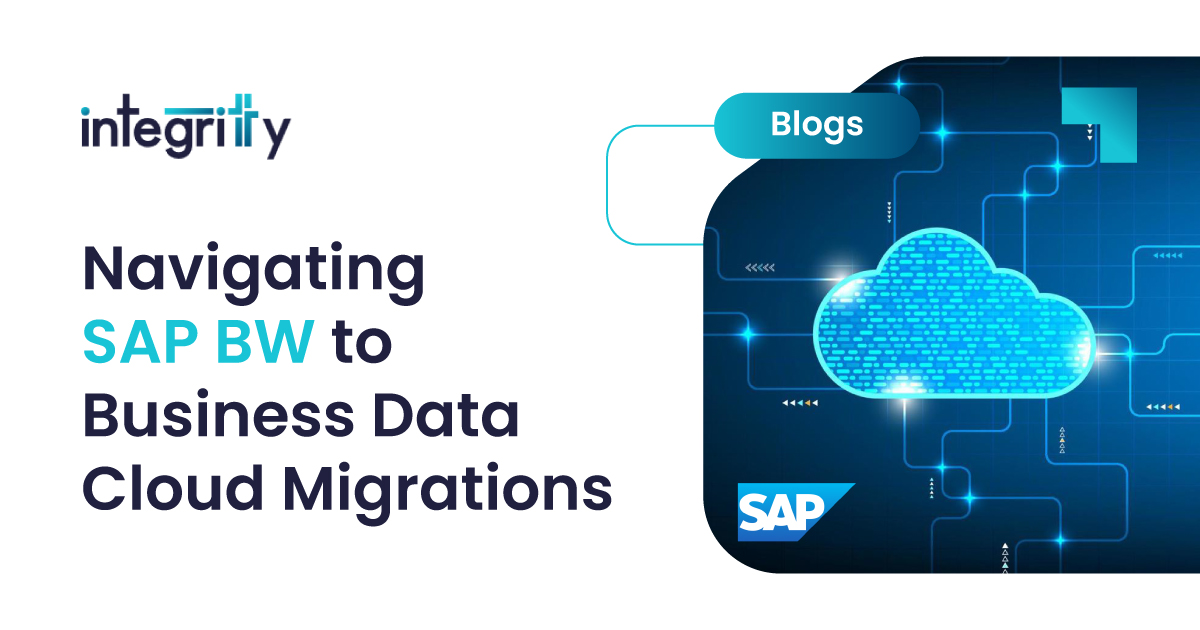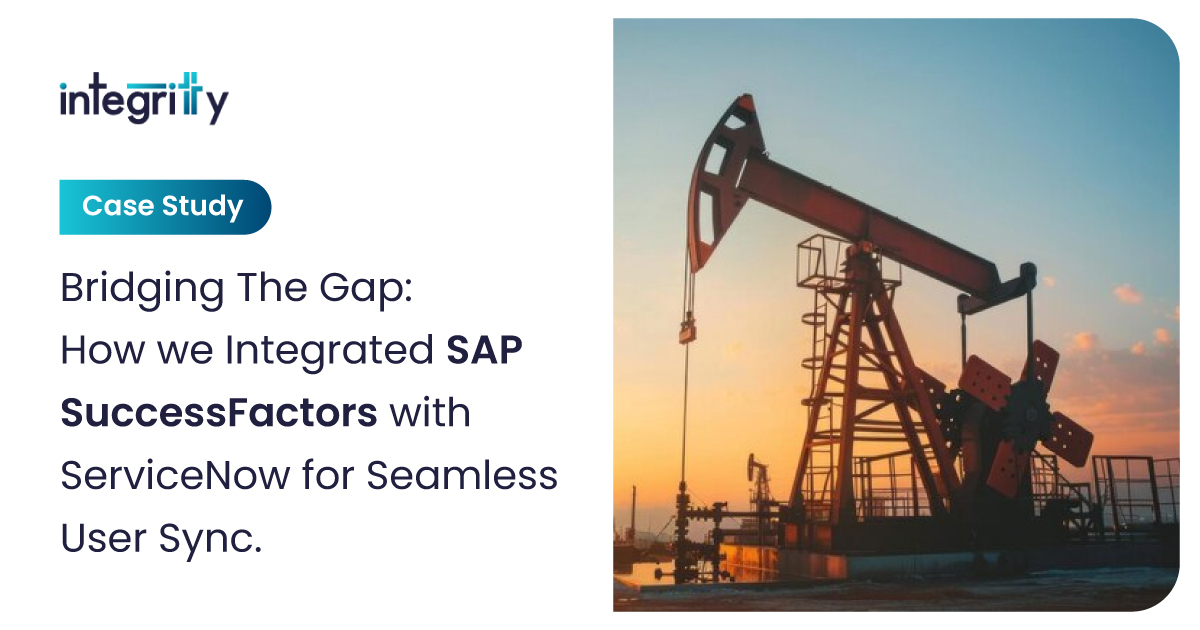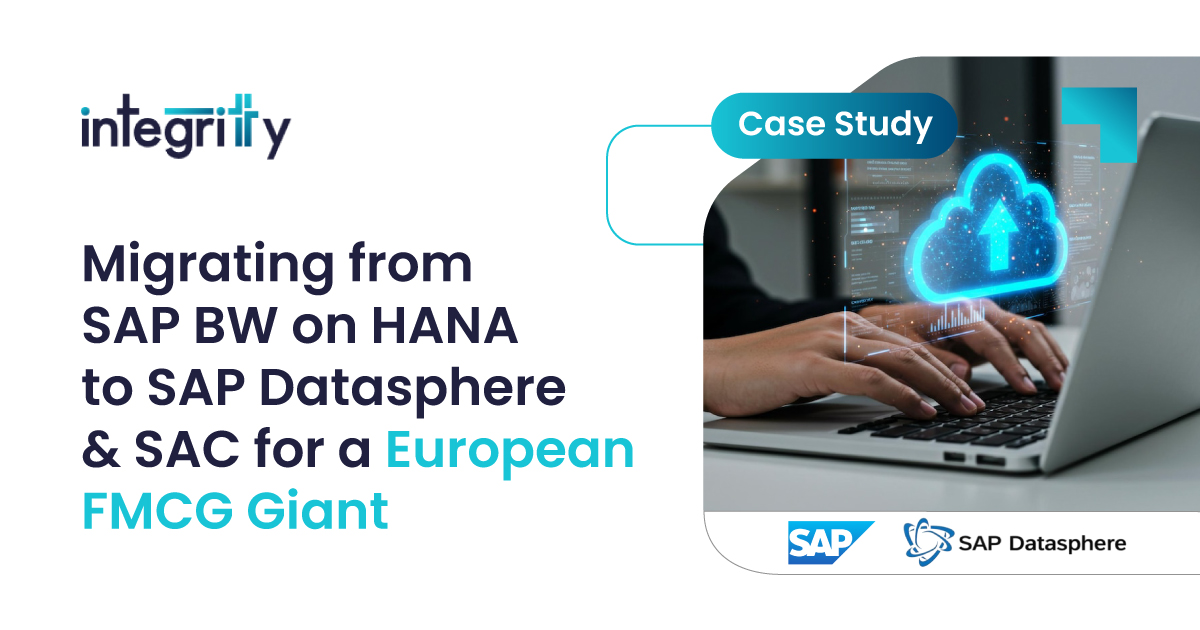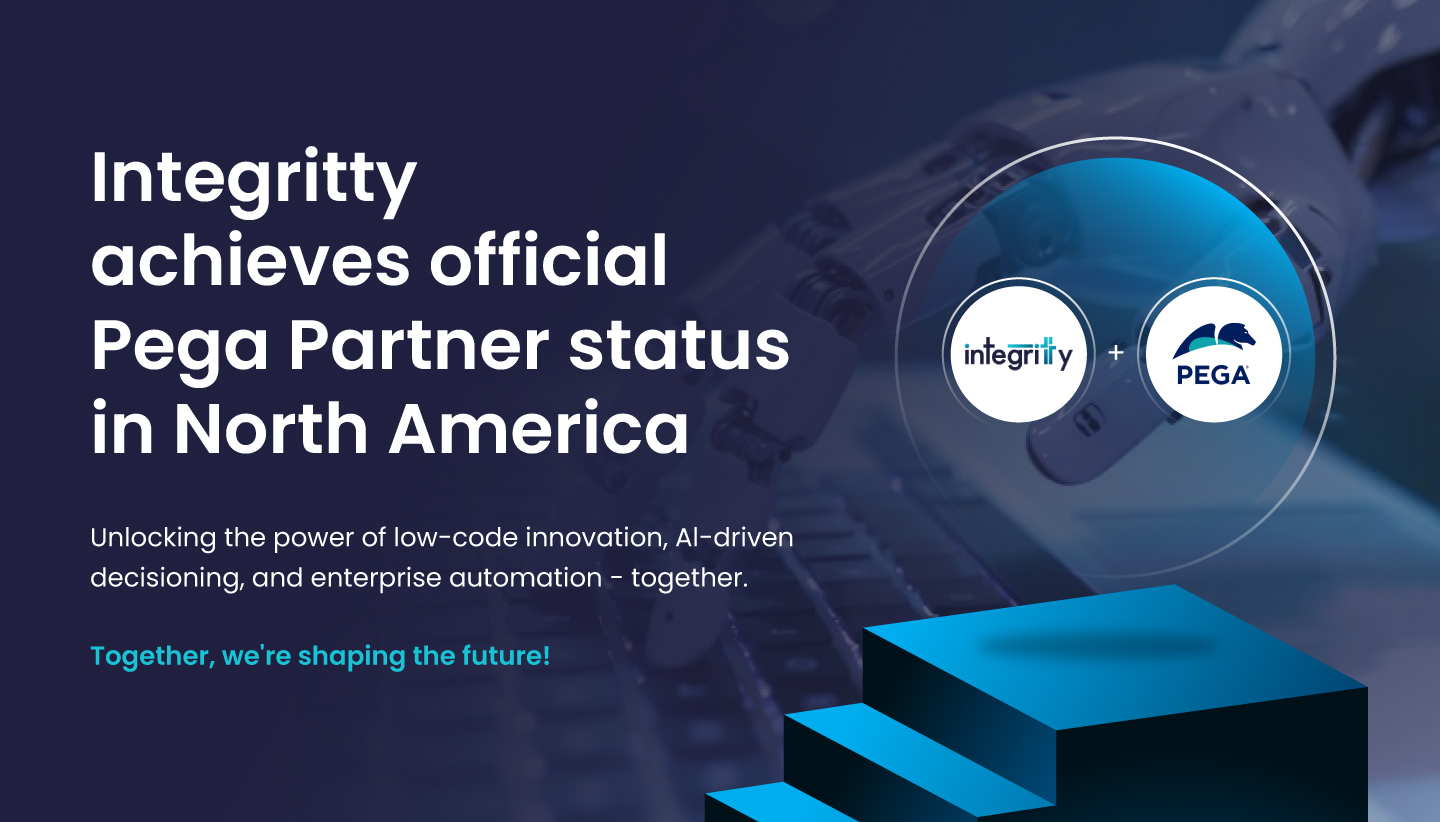Organizations experience a fundamental transformation when they transition from SAP BW to SAP Business Data Cloud (BDC) because this move enables better data utilization for agility and innovation alongside real-time intelligence.
Legacy systems that served as foundational elements in the past now function as barriers for businesses which need to operate faster with lean data strategies and smarter intelligence capabilities. SAP BW maintained its power during its time, but it was developed to operate in batch-processing environments. BDC together with Databricks platforms provides real-time capabilities for an AI-powered future.
Our team at Integritty has guided multiple enterprises through their transition to new systems. The substantial benefits of migration exist alongside major implementation challenges. The blog presents practical knowledge gained from migration experiences which demonstrates successful approaches and unsuccessful methods and provides immediate success strategies.
The Case for Migration: Why SAP BW Is No Longer Enough
SAP BW systems typically feature intricate data models together with sluggish processing pipelines and isolated reporting practices. The analytics requirements of today extend far beyond the periodic reporting and structured data functions which these systems used to serve effectively.
Organizations now demand:
- Real-time operational visibility
- Integration of SAP and non-SAP data
- AI- and ML-driven forecasting
- Self-service analytics and embedded intelligence
SAP BDC, as part of the SAP Datasphere ecosystem, is designed to meet those demands—unifying data, democratizing access, and accelerating decisions. But getting there requires a plan.
Key Challenges in SAP BW to BDC Migrations—And How to Overcome Them
1. Legacy Data Structures and Batch-Oriented Processes
The Challenge
SAP BW systems operate using InfoCubes, DSOs and batch jobs which form rigid structures that are not designed for cloud computing. The BDC semantic modeling and federated architecture does not support the direct conversion of these components.
The Fix
Begin with a specific pilot project. Select 2–3 essential business reporting streams for BDC testing. The approach enables fast feedback while decreasing risk and enables the team to learn about cloud-first data modeling and optimization before enterprise-wide implementation.
2. Integrating Third-Party Data at Scale
The Challenge
Real-world data ecosystems reach far into areas outside of SAP. The integration of third-party data including customer feedback systems IoT feeds financial market data and industry benchmarks proves difficult for traditional legacy tools. This leads to disjointed insights.
The Fix
SAP Data Intelligence enables the orchestration of data integration workflows between different systems. The advanced analytics and unstructured data requirements can be fulfilled by Databricks which provides scalable storage and transformation and ML capabilities. The implementation of standardized data pipelines at an early stage along with a unified data model will reduce the need for future data transformation.
3. Low User Adoption and Resistance to Change
The Challenge
The transition from using traditional SAP reporting tools like BEx queries or custom BW reports to self-service models with SAC on top of BDC creates a disruptive experience for business users. Organizations tend to resist changes and frequently return to their traditional legacy tools.
The Fix
Adoption begins with enablement. Invest in:
- Role-specific training
- Hands-on analytics workshops
- Champions across departments
- Clear success metrics aligned to business outcomes
Pair technical migration with change management and internal marketing. The more users understand the “why” and “how,” the more likely they are to embrace the shift
Making the leap to SAP BDC and Databricks unlocks significant advantages over BW-era infrastructure:

Our Approach at Integritty
We believe migrations should be transformational, not transactional.
Our methodology includes:
- Comprehensive BW system evaluation and gap analysis
- Prioritization of high-impact analytics use cases
- BDC and Databricks architecture design and implementation
- Real-time pipeline configuration and semantic modeling
- Change enablement and analytics training
We don’t just lift and shift. We reimagine how your organization uses data across functions—from finance and supply chain to operations and ESG.
Final Thoughts
Data-driven organizations must adopt SAP Business Data Cloud + Databricks as their strategic data platform. The success of this transition depends on both technological implementation and developing a strategic roadmap and ensuring organizational readiness and leadership through data-driven decisions.
The journey does not need to be completed by yourself. Our team at Integritty delivers tested frameworks together with practical expertise and organizational support to assist businesses in their transformation into intelligent enterprises.
Let’s talk about your migration goals—and how to get there with confidence.





